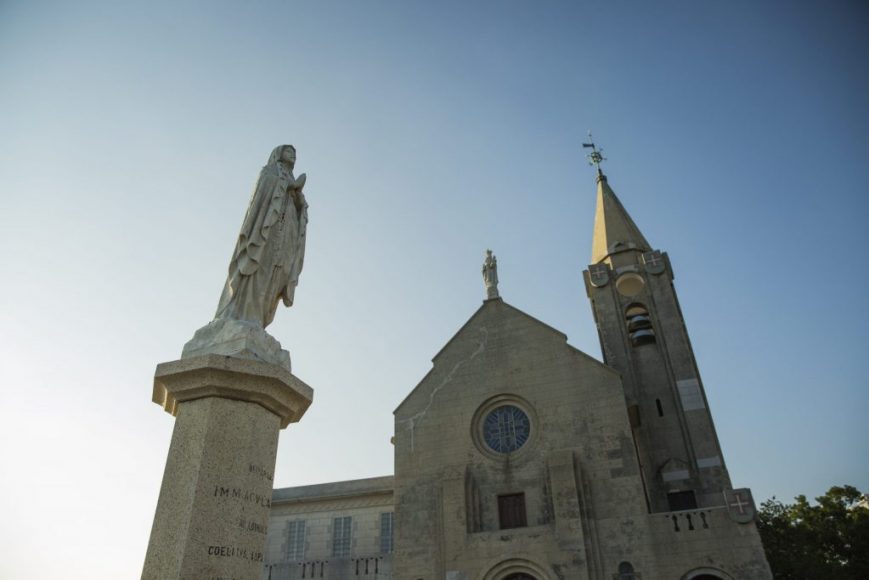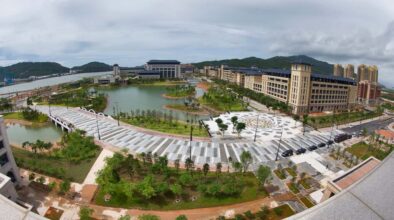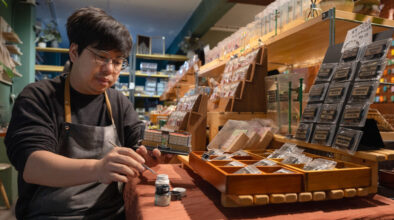Could Macao become a destination for religious tourism? The city’s hallowed past may prove an important cog in its future development.
It’s Saturday evening. Complimentary shuttle buses thrust wide-eyed patrons into a skyline of neon grandeur – preambles to the glitz and glamour of a seemingly endless array of entertainment complexes. Taxis take visitors to brightly lit hotels, while Chinese, Portuguese and Western restaurants are packed to the rafters, and there’s an overall sense of excitement in the air. Welcome to Macao’s tourism industry – fresh, amped up, and buzzing.
Yet, this is not Macao’s sole tourism offering. In fact, culturally, it could be argued that it’s not even its most important. Far from the bustling crowds of the entertainment resorts that promise the possibility of good fortune in the future, there’s a myriad of glimpses into the SAR’s rich religious past – and some spiritual travellers, from across the globe, visit Macao for exactly this reason. Be it for the Catholic relics, the Buddhist temples or the Jesuit statues – the city, with its plethora of sacred attractions, is a place of reverence for visitors to enjoy the aesthetic and historically fascinating fruits of religion’s long presence. Yet if it isn’t already, can Macao become a destination for religious tourism?
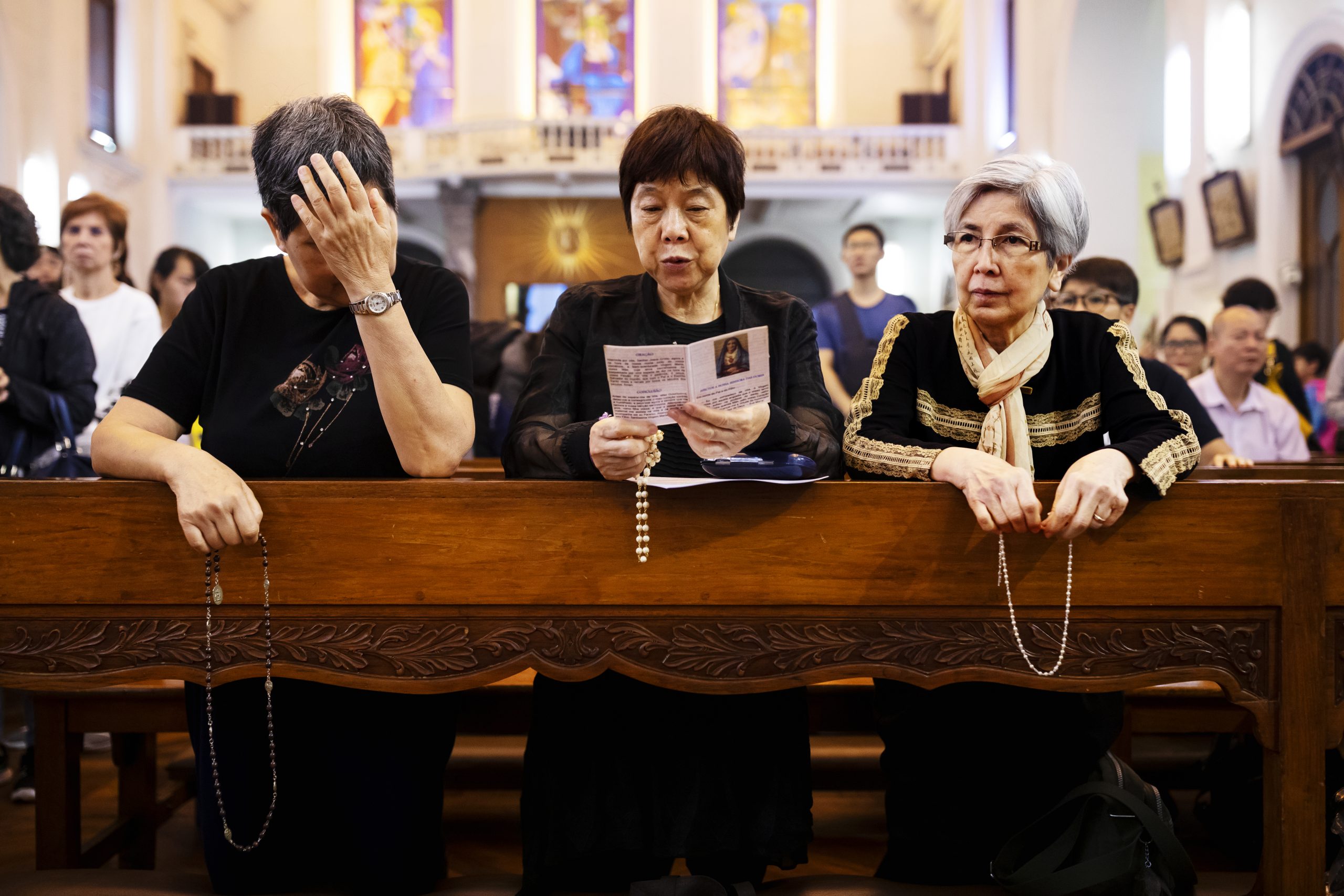
A precious heritage
The Historic Centre of Macao is a UNESCO World Heritage site – the old-world architecture, cobbled streets and dynamic meeting of cultures serve to juxtapose the rampant consumerism of its famous entertainment resorts. The cultural heart of this city is a confluence of religious influence dating back to the 16th century, when Catholic missionaries came to study at St Paul’s College, the first higher-education institution founded by Jesuits serving the Portuguese empire. They imposed revelation on a Buddhist, Taoist, and folk religion-denominated populace and thus began the SAR’s multi-coloured, multi-cultural religious history.
Nowadays, Macao is perhaps more globally known for its bright lights than its religious enlightenment. And more attention than ever is being focused on the future of its tourism industry from an economic, cultural and spiritual standpoint, with the city attracting more visitors than ever last December with over 3.5 million people arriving – the most in one month on record. The first quarter of 2019 saw 10.36 million visitors, a 21.1 per cent increase year-on-year, with numbers estimated to top 38 million tourists by the end of this year, which would also be the biggest on record. With the completion of the Hong Kong–Zhuhai–Macao Bridge last year, the influx will only continue to increase – as many as 40 million in the year 2025, according to the SAR’s tourism authorities.
Macao has a wealth of religious history and is a city full of believers today. It is home to more than 660,000 people, with around 80 per cent practicing Chinese folk religions or Buddhism as of 2016. The same survey found about 30,000 Roman Catholics – most hailing from the Philippines or Portugal – and more than 8,000 Protestants, with smaller groups of Baha’is and Muslims.
Although many of Macao’s significant religious fixtures and relics are denominationally Catholic, they undoubtedly hold a broader appeal as aesthetic and spiritual fixtures that would appeal to both secular and non-secular crowds. This could also be said for religious events in the city, such as the Procession of the Passion of Our Lord, the God Jesus, Easter and the Procession of Our Lady of Fátima. Each is recognised as a public holiday, situating Macao uniquely in all of China as the only city to observe such concessions.
This is a huge boon to religious participation – even in a periphery sense – for residents and tourists. Francisco Vizeu Pinheiro, architect and Associate Professor at the Faculty of Creative Industries at Macao’s University of St Joseph, said: “Some come because it is a tradition. Others because of the Asian environment of traditions that were born in Europe, particularly in Portugal and Spain and Italy after the Catholic Reformation, as an answer to the Protestant Reformation. For Catholics, this reaction is manifest in the baroque movement with exuberant architecture, sculpture, and painting.”
A spiritually unique city
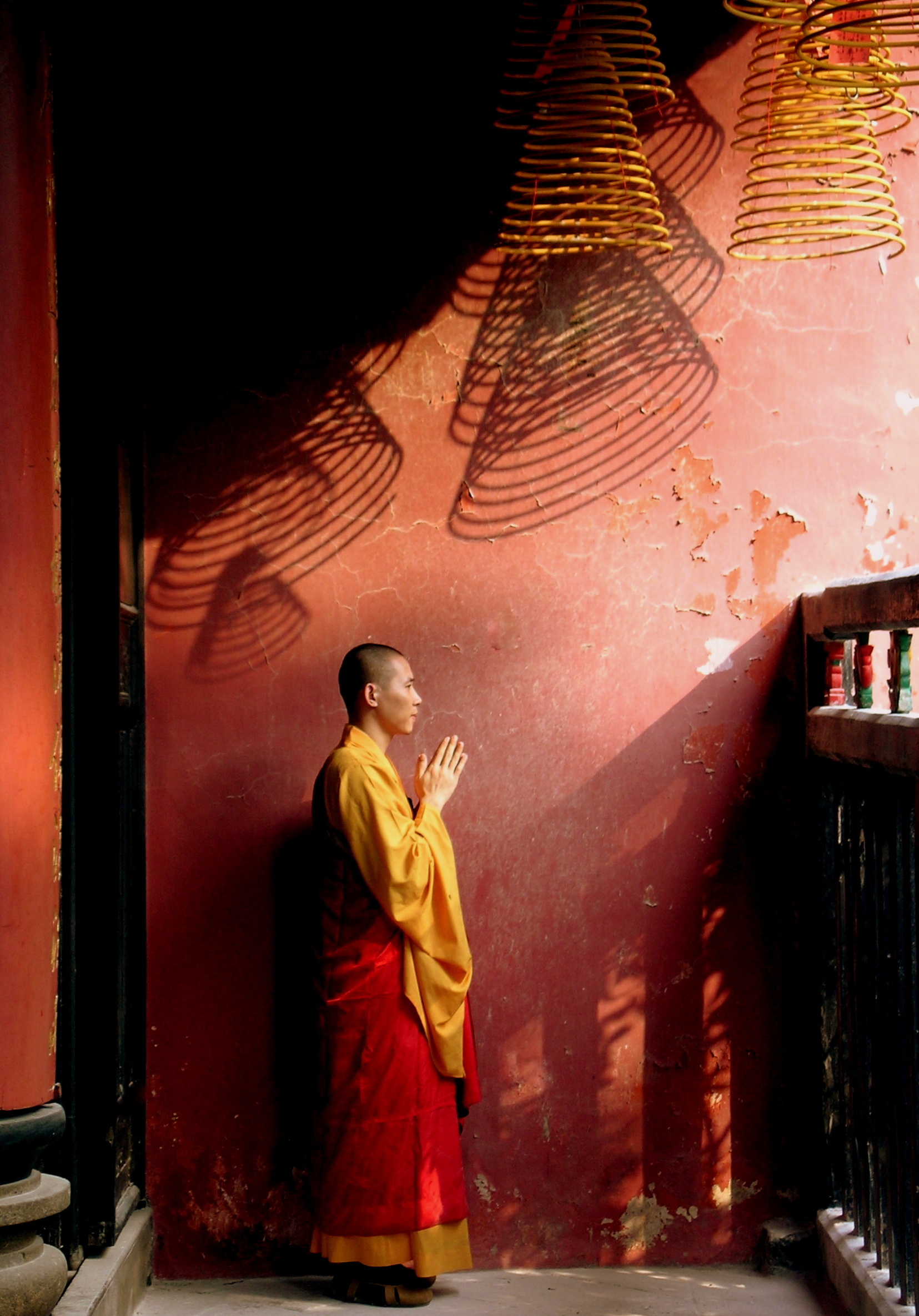
A place’s value for religious tourism is only as good as the richness of its history and what remains to observe this history as a living construct. Thankfully, Macao’s is one of the most unique in this part of the world. While the city’s Portuguese past is well known, the ancient A-Ma Temple stands as a testament to its Taoist roots. Built in 1488, it is dedicated to Matsu, the goddess of fishermen and seafarers. Legend tells that when the first Portuguese sailors landed near the temple and asked the name of the place, locals replied “A-Ma-Gau,” meaning ‘bay of the goddess A-Ma’, leading to the Portuguese naming it Macao.
St Paul’s College would soon cast its secular influence not just over Macao, but the entire continent as it became the Catholic epicentre of Asia. Macao’s most famous attraction’s origin is one that had far-reaching consequences that led the city becoming what it is today with Portuguese missionaries, merchants, and explorers – the first Westerners to reach the Far East – landing in Macao with the goal of creating a base from which to proselytise.
The adjacent Church of St Paul’s – then one of the largest in Asia – was first laid down in 1580 and, after suffering fire damage, was subsequently rebuilt between 1602 and 1637 by Japanese craftsmen who had taken refuge in Macao after suffering persecution in their homeland. Although it was almost completely razed during a fire in 1835, the iconic ivory-coloured stone facade survives to this day.
The ruins stand as one of the city’s most enduring attractions among a litany of significant historical and religious fixtures. Such is the exquisite nature of the detail in this facade it offers a challenging landmark for tourists to dissect. During the 66-step ascent to the ruins – a pilgrimage in itself – St Paul’s, for some tourists and locals, represents a history of enlightenment and a landmark that signposts Macao’s rapid development from then on.
With regards to religious tourism, A-Ma Temple and St Paul’s are wondrous constructs that serve to inform historical – and spiritual – context. However, they are far from all Macao has to offer. Loi Chi Pang, director of Macau Museum, says: “The ruins of St Paul’s and A-Ma temple are of course the most popular tourist sites for first-time visitors. But it’s highly recommended that tourists wander along the Macao Historical Centre, which was added to the World Heritage List. They can also find many interesting religious sites such as Kun Iam Temple, Protestant Cemetery, St Joseph’s Seminary and Church, and St Dominic’s Church.”
Neoclassical attractions
Some of the best examples of neoclassical architecture in all of Asia can be found in Macao: 16th-century St Lawrence’s Church; the Holy House of Mercy’s arcade, which was added to the centuries-old building in 1905; and St Joseph’s Seminary and Church, whose elegant, grandiose baroque architecture accents the more simplistic stylings of the neoclassical seminary. One of the most popular tourist attractions in the city, Guia Chapel, which rubs shoulders with tourist attraction Guia Lighthouse, boasts beautiful frescoes which incorporate both Western and Chinese influences – a duality that is rare for any building originating in the 17th century.
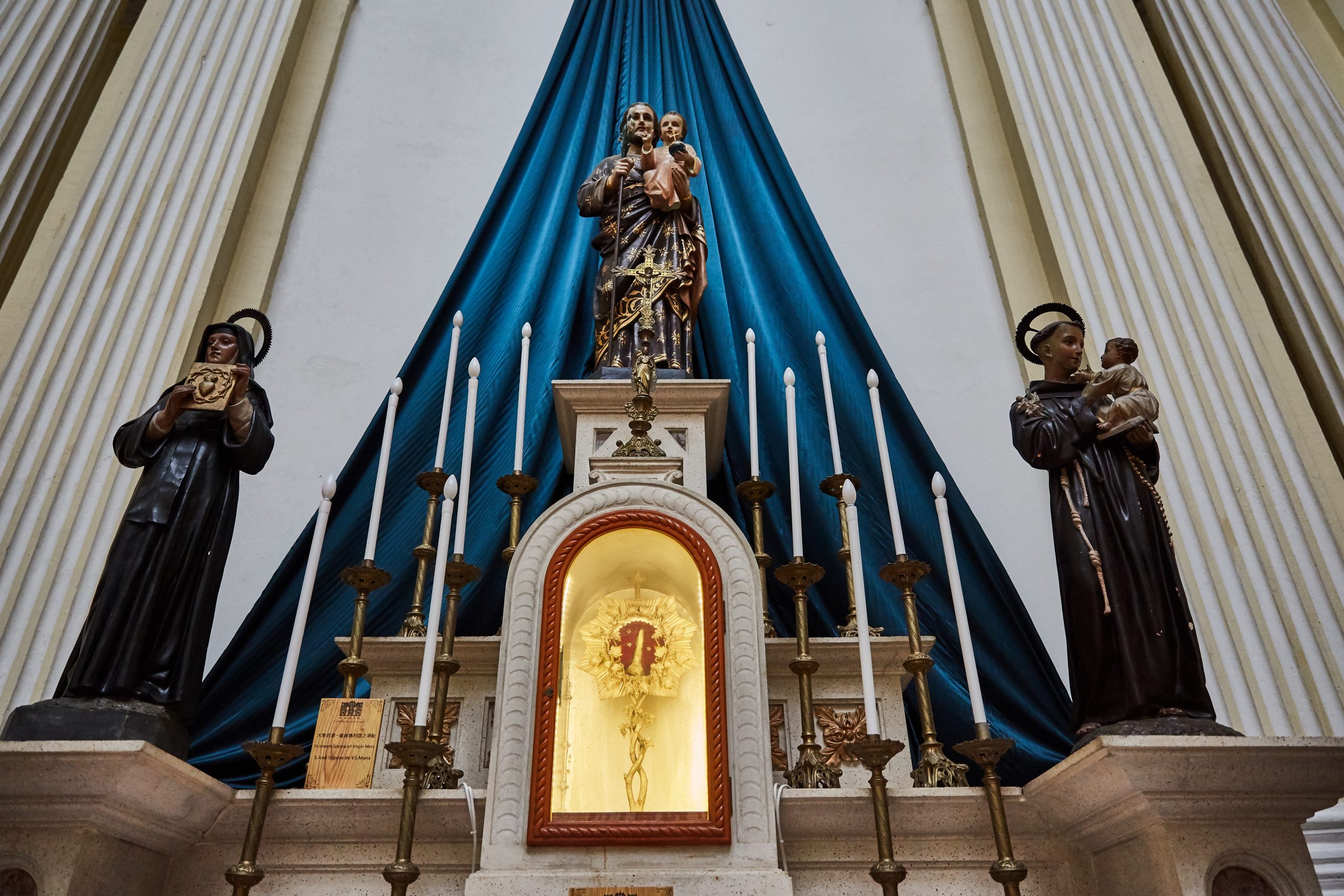
Spiritual tourists also make pilgrimages to the St Joseph’s Seminary and Church, where some of most important relics in Asian Christianity are housed. The crowning jewel in this collection is a bone from the arm of St Francis Xavier, the patron saint of missionaries and one of the founders of the Jesuit order. His work in India would see him become deeply admired due to his ability to work alongside the poor with respect and humility. He would go on to work in Japan, overseeing the translation of many significant religious texts before eventually dying of fever on the island of Shangchuan off the coast of Guangdong. His body was later moved to Goa, India.
St Francis Xavier is one of the most important religious figures in all of Asia and his bone in Macao has significance for many. Before being moved to St Joseph’s, the relic was kept at the Chapel of St Francis Xavier, a beautiful baroque fixture that housed the bones of Christians and priests from Japan until they were moved to the Museum of Sacred Art and Crypt at the Ruins of St Paul’s.
Father Luís Sequeira, a Jesuit priest in Macao, noted that there are “a great number of churches in this little territory” which are “old and beautiful buildings.”
“From its beginning in 1557, Macao’s population deeply identified with the Christian faith and was even given the official name of ‘City of the Name of God’. Since those days, no city in Asia or land of Taoism, Buddhism or Shintoism has such an abundant manifestation of Latin and Mediterranean Catholic churches.”
More than churches
Catholic and Portuguese influence are obvious in Macao and its religious sites – but it’s far from the whole story. Such is the city’s potential for religious tourism, it offers insight into a pantheon of religious and folk history. There are more than 40 temples across the SAR, including Lin Fung Temple, which was built in 1592, its ornate facade framing a courtyard of writhing dragons. Then there is the temple of Shi Gandang, one of only two in the world, and Tou Tei Temple, a network of temples with shrines to a number of gods and goddesses.
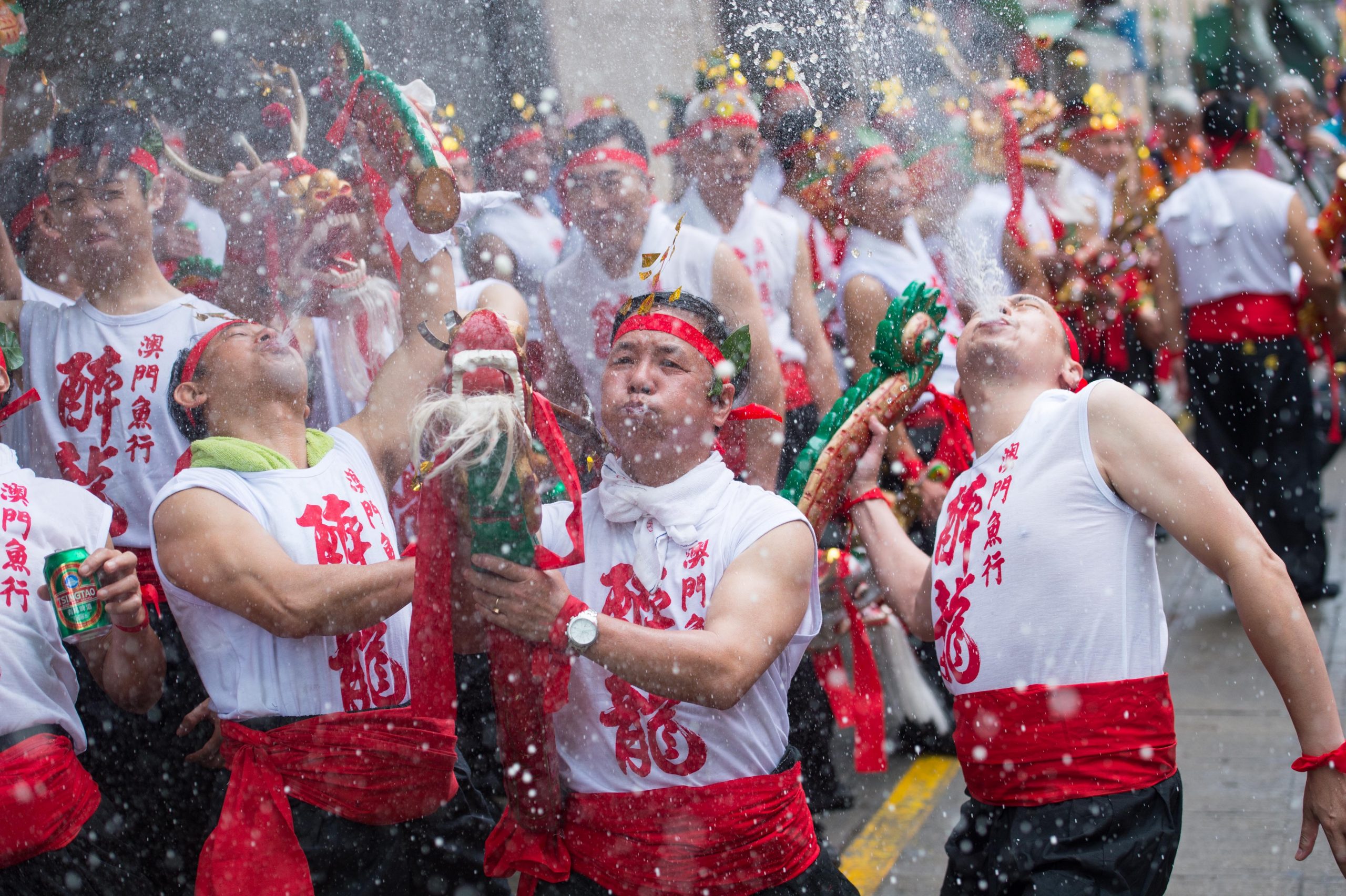
Some of Macao’s most popular events bear a religious foundation while broadly offering a flavour of local culture – and they are inclusionary, affording tourists an opportunity to get involved. The city’s famous feasts range from the demure and serene, like Shi Gandang, a celebration for the family-orientated god Tou Tei that sees Macao filled with the smell of barbecues and sound of firecrackers to the more raucous Feast of the Drunken Dragon, boasting lion dancing and plenty of eating and drinking.
“Many religious events and festivals are still persevering in Macao,” said Loi. “One and a half centuries ago, an artist from Danzig – Eduard Hildebrandt – made a painting in front of A-Ma Temple: a Cantonese opera performed inside the shelter of bamboo. You can still enjoy this unique event at the same location nowadays. Also, you can attend the Procession of Our Lady of Fátima on the streets in May every year.”
The benefits of religious tourism
Tourism is a significant contributor to economic growth and development with more than a billion people make international trips every year, and religious tourism is one of the fastest growing travel segments. According to the UNWTO (UN World Tourism Organisation), tourists take 600 million national and international religious trips per year. While major religious destinations – Mecca in Saudi Arabia, the Wailing Wall in Israel, etc – account for roughly half that number, less well-known sites and gatherings are increasing in popularity.
Unlike some destinations, which restrict entry or participation, the religious relics, buildings, and events in Macao are all there for tourists to see, enjoy and discover. With so much to offer, it can be argued the city is already a religious tourism destination. But is it worth leveraging these assets and increasing the SAR’s marketing as such a destination?
Edmond Eh, professor at the University of St Joseph’s Faculty of Religious Studies, believes it is. Noting that Macao is “growing steadily as a tourist destination,” with more than 35 million visitor arrivals in 2018, primarily from mainland China, Hong Kong, Taiwan and South Korea, he argued that an increase in religious tourism would “greatly enhance Macao as a destination for cultural purposes.”
“It would also help to attract people who do not visit for leisure or economic reasons,” Eh said, “and provide an additional reason for people to extend their visit in Macao – and even to re-visit Macao.
“Macao has a bright future as a destination for religious tourism,” he continued. “The majority of the squares and buildings found in its Historic Centre are associated with significant religious meaning. The city is able to promote greater historical and cultural understanding for the Chinese people. The public celebration of festivals from different religious traditions so closely with each other provide Macao with tremendous potential. The city is in a unique position to bear witness to the values of religious diversity and harmony in the world.”
Father Sequeira focuses more on the religion aspect of religious tourism: “Although it is a source of attraction for many people and a source of income for Macao, in terms of the experience of faith, it is only a first step. The churches, the processions, the statues, and the paintings are simply the beginning. However, Church in Macao is preparing tourist guides for many people coming from the mainland so they can use them in preparation for knowing and believing in God.”
Loi looks beyond the Church to the diversity of religions represented in Macao. Religious conflicts occur in nations all over the world, he noted, “yet Macao is a very good example of religious harmony, where peoples of various races or religions live on harmonious terms. Here in Macao, such a small city, people respect each other. This is why Macao is so attractive as a great destination for religious tourism in the world.
PHOTOS António Sanmarful, António Leong and Eduardo Martins
